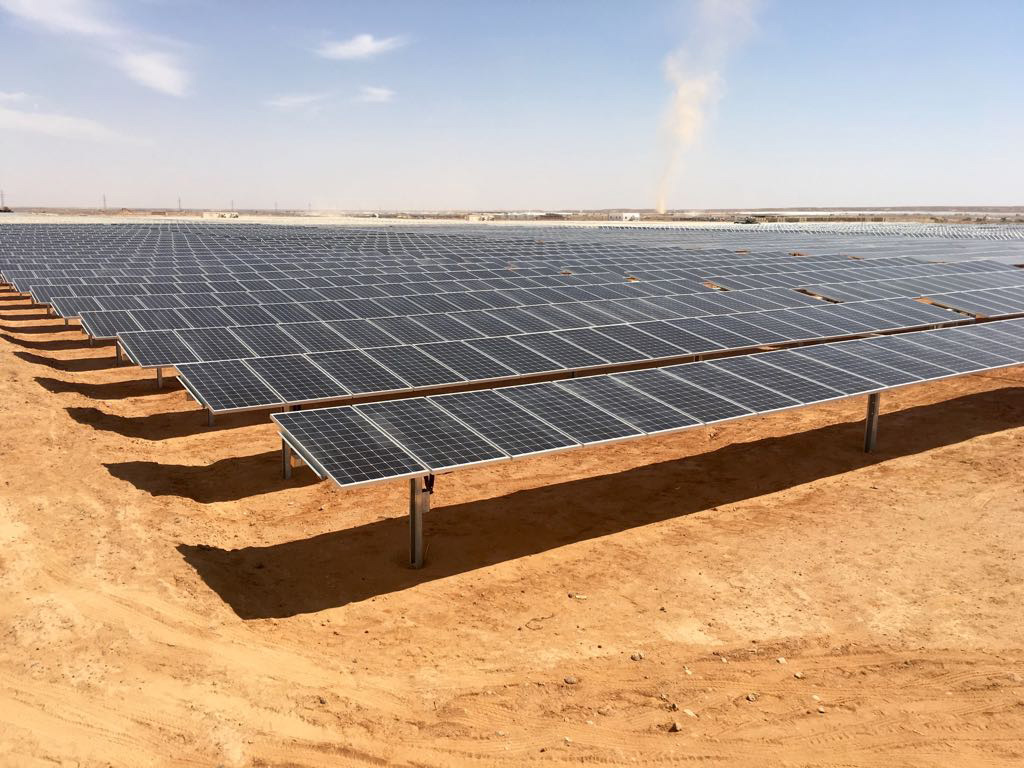The state-owned institute has confirmed it will build a 200 MW solar PV farm in Jordan. The agreement with Jordans Ministry of Energy and Mineral Resources was formalized during the World Future Energy Summit (WFES), which runs from January 18 to 21 in Abu Dhabi, the United Arab Emirates.
Citing Jordans Minister Ibrahim Saif, Bloomberg reported earlier this week that the project is expected to cost around US$200 million, and that a 15 year PPA has been agreed upon, something Masdar clean energy director, Bader Al Lamki confirmed to pv magazine at WFES. If needed, Saif added, Jordan will provide land, logistics and a line to connect the project to the electricity grid.
The announced solar plant is Masdars second major investment in Jordan following the 117 MW Tafila wind farm, a joint venture between Inframed, EPGE and Masdar, which was delivered last December.
Jordan to raise its PV target
It now appears Jordan is on the way to surpassing its target of installing 600 MW of solar PV by 2020, with 400 MW having already been awarded under the countrys first two tenders for large-scale plants; and a further 100 MW approved in the form of an EPC contract for a state-owned PV plant, to be located in the south.
Net metering too has created an active domestic market. According to the latest statistics, published in September, around 1,000 net metering projects have been installed in Jordan with a total capacity of 45 MW. This figure is expected to reach 100 MW by the end of 2015, Samer Zawaydeh, a Jordan-based freelance engineering consultant, told pv magazine.
According to Jordans current energy strategy, the country has a target of generating 10% of its energy from renewable sources by 2020. Of this target, 600 MW of power will come from solar PV, the government has said.
Zawaydeh said Jordans national demand for primary energy is increasing annually by 5.4%. According to his calculations, it will need roughly 11787310 toe of primary energy in 2020. This means, for the country to generate 10% of its energy from renewables that year, solar PV installations need to be greater than 600 MW. A viable 2020 scenario for Zawaydeh is 2.5 GW from solar PV and 1.7 GW from wind power.
Masdar and Jordan: An evolving relationship
The relationship between Masdar and Jordans PV sector appears somewhat tricky. According to information gleaned by pv magazine, Masdar is a key reason why Jordan cancelled its last large-scale solar PV farms tender.
In 2014, Jordans Ministry of Energy and Natural Resources launched a third round for renewable energy bids, but it eventually scrapped the tender altogether. Various sources commented that this decision resulted from a visit to Jordan by Masdar representatives, where they promised the government help with building a 1 GW renewable energy pipeline and its so-called green corridor a high voltage transmission line.
However, the Green Corridor project is now proceeding with funds from Europe. Specifically, Frances development agency, the European Investment Bank and other European Union funds have agreed to provide Jordan with approximately 146 million to upgrade its grid infrastructure. The project is now under a tendering process and should be operational by 2018.
The co-operation with Europe enables Jordan to advance its solar PV program based on the same competitive tendering schemes it utilized for its first two tenders. Therefore, a crucial question arises: Why did Jordan decided not to tender the new 200 MW PV farm and instead, allocate it directly to Masdar?
More direct PV allocations to come?
A possible explanation, said Zawaydeh, might be that “the development of renewable energy projects in Jordan between 2011 to 2015 indicates that Direct Proposals were able to complete the project development and commissioning faster than Expressions of Interest [expressions of interest are invited via the tender schemes].”
Therefore, one can assume in the years up to 2020, Jordan could allocate more PV capacity directly to investors rather than tendering it. In May 2015, for instance, Jordan signed a memorandum of understanding with Hanergy concerning the development of 1 GW solar PV and wind capacity.
On the other hand, part of Jordans solar PV success is due to its transparent tendering scheme. It would be wise for Jordan not to lose this advantage, which has helped make it a reference case for the rest of the MENA region.
The January issue of pv magazine provides an in-depth analysis of Jordans solar PV market.
Edited by Becky Beetz
This content is protected by copyright and may not be reused. If you want to cooperate with us and would like to reuse some of our content, please contact: editors@pv-magazine.com.


By submitting this form you agree to pv magazine using your data for the purposes of publishing your comment.
Your personal data will only be disclosed or otherwise transmitted to third parties for the purposes of spam filtering or if this is necessary for technical maintenance of the website. Any other transfer to third parties will not take place unless this is justified on the basis of applicable data protection regulations or if pv magazine is legally obliged to do so.
You may revoke this consent at any time with effect for the future, in which case your personal data will be deleted immediately. Otherwise, your data will be deleted if pv magazine has processed your request or the purpose of data storage is fulfilled.
Further information on data privacy can be found in our Data Protection Policy.